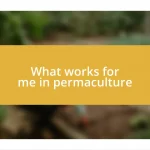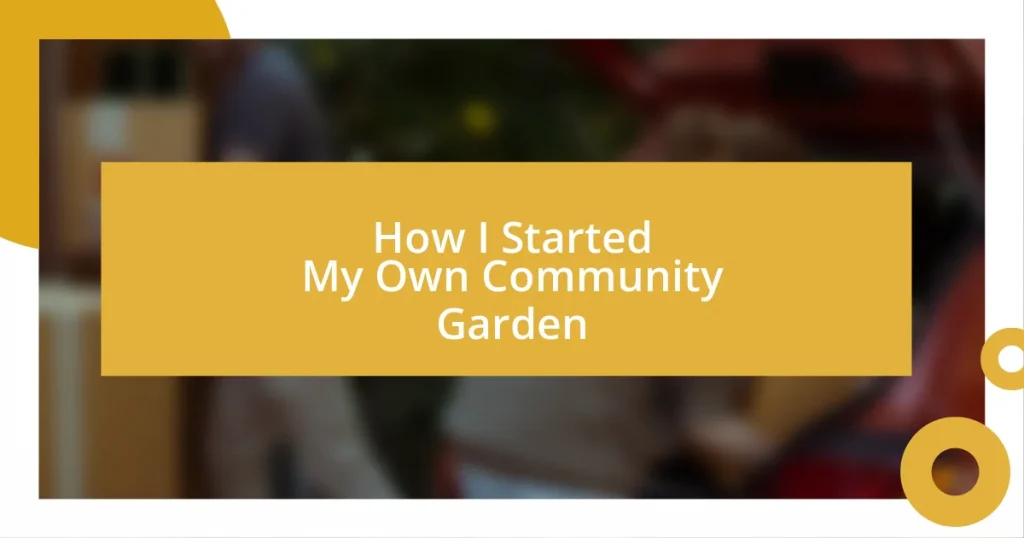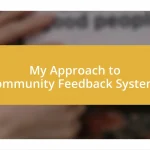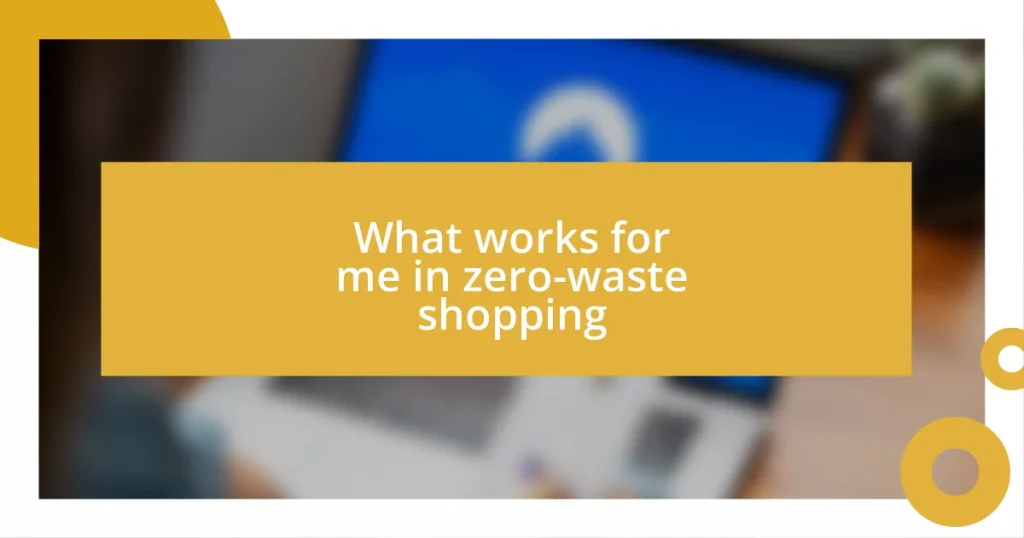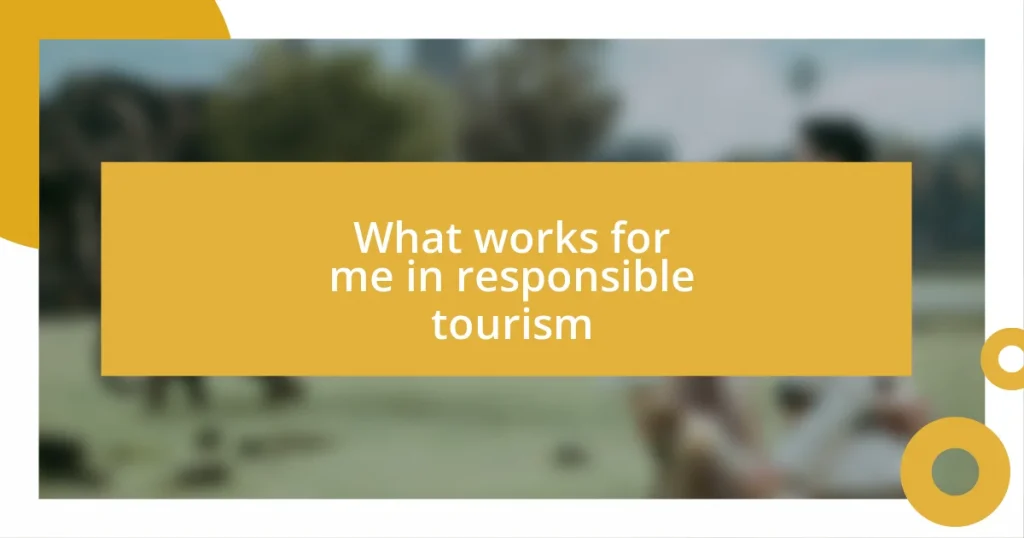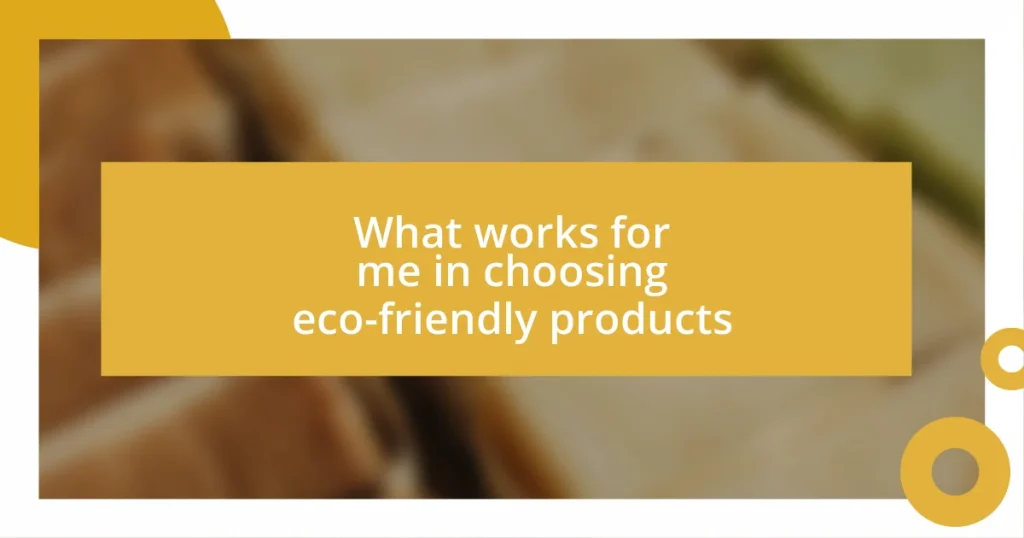Key takeaways:
- Community gardens foster connections, allowing neighbors to bond over gardening and shared experiences, enhancing community pride.
- Choosing an accessible location and involving neighbors in planning and plant selection are crucial for building ownership and collaboration.
- Celebrating milestones, like harvest gatherings and workshops, strengthens community ties and emphasizes the importance of collective efforts in gardening.
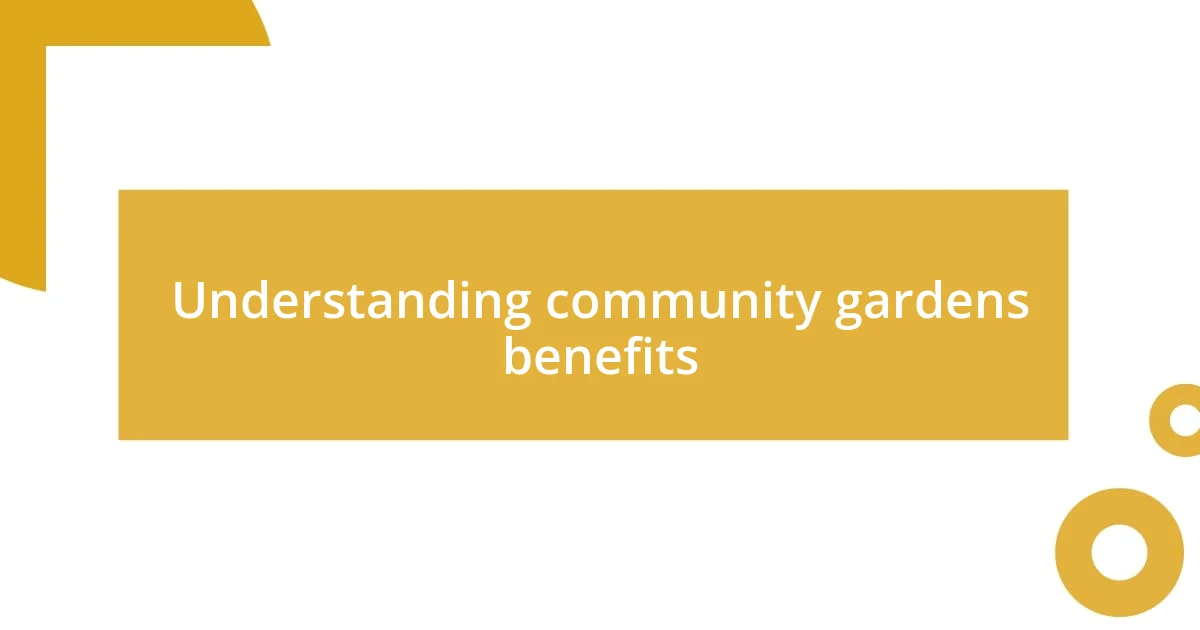
Understanding community gardens benefits
Community gardens offer a plethora of benefits that really transform a neighborhood. I remember the first time I met a neighbor while tending to my plot; we ended up sharing gardening tips and life stories. Isn’t it fascinating how a shared space can foster connections that might never happen otherwise?
One of the most rewarding aspects of community gardens is the access to fresh produce. I still recall the joy of harvesting my first basket of tomatoes. The taste of home-grown food is unbeatable, and it’s a chance to foster healthier eating habits for ourselves and our families—wouldn’t you agree that there’s something special about knowing exactly where your food comes from?
Moreover, these gardens cultivate not just plants, but also a sense of community pride and responsibility. I’ve witnessed neighbors work together to maintain the garden, and it’s a beautiful example of teamwork in action. Have you ever felt that rush of accomplishment when contributing to something bigger than yourself? It’s this camaraderie that truly enriches our lives and builds lasting relationships.

Choosing the right location
Finding the right spot for your community garden is crucial. I still remember walking through my neighborhood, envisioning where the garden could grow. The location should be accessible and inviting—somewhere everyone feels comfortable gathering and nurturing plants together.
Here are some key considerations for choosing the right location:
– Look for a space with ample sunlight, ideally 6-8 hours a day, which is vital for a thriving garden.
– Ensure access to water, whether it’s a nearby spigot or a rainwater harvesting setup.
– Consider soil quality; testing it can reveal whether you’ll need amendments for healthy plant growth.
– Choose a place that isn’t prone to flooding or other environmental hazards—my early choices were often thwarted by pesky drainage issues.
– Think about community accessibility; the site should be reachable by foot or bicycle for those in the neighborhood.
I learned this the hard way when my first choice was too tucked away and often overlooked. After relocating, I noticed more neighbors stopping by, sharing laughter and gardening tips. That sense of community blossomed right along with the plants!

Gathering support from neighbors
Gathering support from neighbors is essential to the success of a community garden. When I first had the idea, I organized a casual meet-up in my backyard, inviting anyone who was interested. Over some homemade lemonade and snacks, I shared my vision. The excitement in the air was palpable—people felt included, and it brought out stories of their childhood gardening experiences. Do you find it easier to engage with folks in a relaxed setting? I certainly do.
Once we had a foundational group, I realized we needed to develop a plan together. Collaboratively setting goals for the garden not only made everyone feel valued, but it also fostered a sense of ownership. I recall one neighbor suggesting we dedicate a section for flowers that attract pollinators, which turned out to be a fantastic idea. It’s amazing how a simple discussion can lead to inspired decisions that enhance the garden. Have you ever experienced that spark of collaboration?
Creating a mailing list and a social media group also helped keep folks in the loop about events and progress. I raved about our challenges and victories alike, which kept the momentum going. The feedback I received from neighbors was both motivating and heartwarming. It’s remarkable how sharing your journey resonates with others; suddenly, everyone felt like part of a big gardening family. Don’t you think cultivating relationships is as crucial as cultivating the garden itself?
| Strategy | Details |
|---|---|
| Host a gathering | Organize an informal meet-up to share your vision and collect ideas. |
| Collaborative planning | Engage neighbors in setting goals to foster ownership and excitement. |
| Communication channels | Create a mailing list and social media group to keep everyone updated. |

Planning your garden layout
When I started visualizing the layout of my garden, it was like piecing together a puzzle. I grabbed a notebook and sketched various designs, thinking about the flow of space and sunlight. Have you ever felt the thrill of watching your ideas take shape on paper? It was exhilarating; the garden began to feel like a joyful extension of my home.
Next, I debated the types of plants I wanted to include, recognizing that tall sunflowers would need their own space away from delicate herbs that could easily get overshadowed. I recalled how we once crammed everything together, only to find the squash vines had overtaken everything! To prevent this chaos, I created zones: one for vegetables, another for flowers, and a cozy corner with benches for relaxing. The idea was to create not just a garden, but a vibrant gathering space for the community.
As I finalized the layout, I enlisted a few neighbors for their input. They shared their excellent ideas, like incorporating pathways lined with colorful stones. It was such a small detail, yet I could already picture families strolling through, laughter floating in the air. How could such little moments of creativity make such a difference? The answers emerged from our conversations; we were building a collaborative spirit from the ground up, quite literally. This shared vision made all the difference, turning sketches into a place we’d all cherish.

Selecting plants for success
Choosing the right plants for our community garden was a delightful challenge. I remember standing in the nursery surrounded by vibrant colors, feeling that rush of excitement and a touch of overwhelm. I asked myself, “What do we really want to grow here?” It was crucial to select plants that not only thrived in our local climate but also catered to the interests of everyone involved. How can we create a garden that brings joy and utility? By prioritizing both aesthetics and practicality, we hit the sweet spot.
One strategy I found helpful was to incorporate a mix of perennial and annual plants. I shared my thoughts with my neighbors, and we agreed on including some hearty perennials like rhubarb and strawberries—something that would come back year after year, bringing an element of surprise and delight. I still remember that first spring when the rhubarb peeked through the soil; it felt like a small victory, a promise of growth! Balancing ongoing maintenance with easy-care varieties meant everyone could enjoy the garden without feeling overwhelmed. Have you ever considered how a thoughtful mix can change the dynamic of a small space?
Ultimately, I learned that community input is essential in plant selection. I initiated a survey, allowing everyone to vote on their top picks, from tomatoes to zinnias. The enthusiasm was contagious, and it felt liberating to tap into our collective preferences. As each plant started to take root, I realized that every choice was a reflection of our shared passions—beyond just the flora, we were cultivating a tapestry of stories, memories, and friendships. Isn’t it incredible how something as simple as selecting plants can forge connections among people?
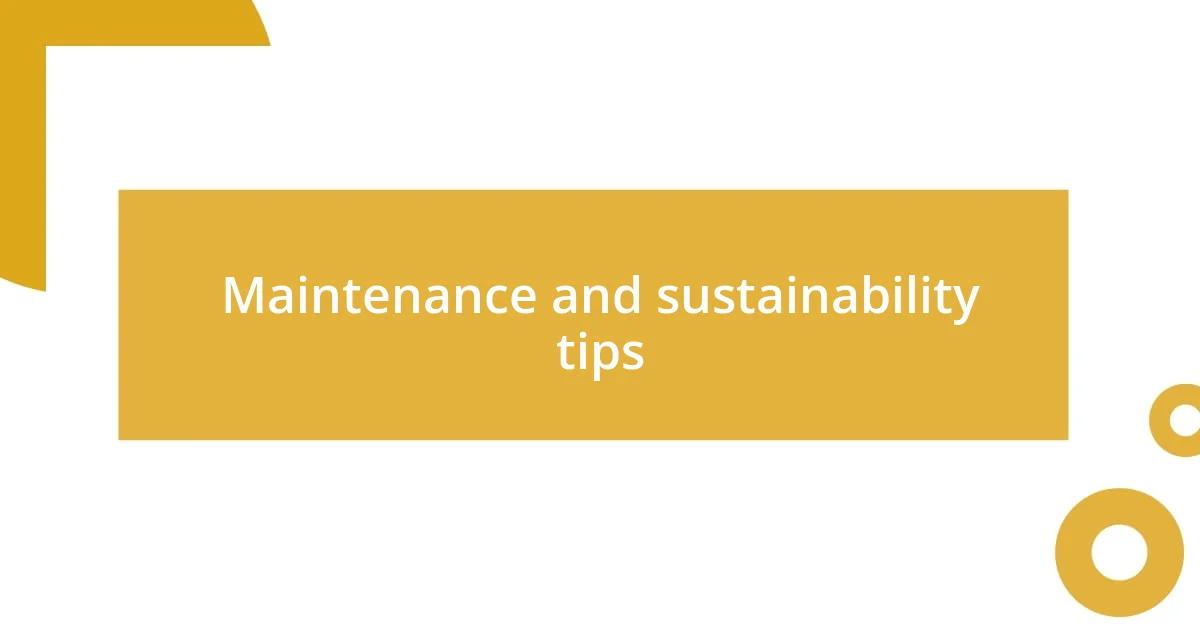
Maintenance and sustainability tips
Maintenance was a learning journey for me, one that took patience and creativity. At first, I struggled with the weeds taking over, but then I discovered the power of mulch—it was like a protective blanket for my plants. I remember feeling a surge of relief when I realized that a simple layer of straw or wood chips could keep the weeds at bay while retaining moisture. Have you ever experienced that moment when a small change leads to significant improvement? It’s truly motivating!
Sustainability became a core part of our garden’s identity over time, and composting was an essential piece of the puzzle. I vividly recall the first time we gathered kitchen scraps and yard waste. Sorting those materials felt a bit like treasure hunting; each piece, from onion peels to dried leaves, had value. Not only did it reduce our waste, but it also provided nutrient-rich soil that transformed our plants. Isn’t it fascinating how such a simple act can close the loop in our gardening efforts?
Lastly, we embraced rainwater harvesting, which brought our community together in a unique way. I still chuckle when I think about our weekend of building a rain barrel—neighbors brought snacks, and we had a mini-workshop. Utilizing collected rainwater not only kept our plants hydrated but made us feel more connected to the environment. This shared commitment sparked conversations about sustainable practices beyond the garden. It felt wonderful to realize that our little garden was contributing to larger environmental goals. Have you considered how your gardening choices impact the community and the planet?
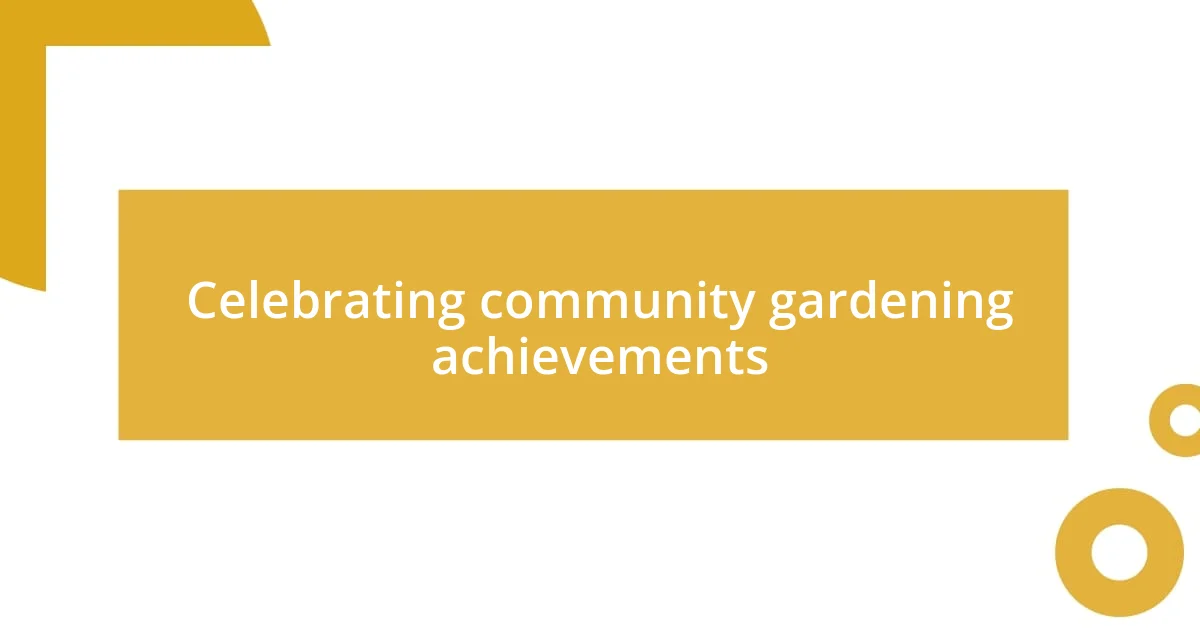
Celebrating community gardening achievements
One of the most rewarding moments in our community gardening journey was the celebration of our very first harvest. Picture this: an impromptu gathering with laughter, smiles, and baskets brimming with fresh produce. It was during that potluck when I realized how far we had come together. Each dish, infused with ingredients from our garden, told a story of collaboration and hard work. Have you ever felt that sense of pride when sharing something you’ve nurtured? It’s a moment to treasure!
As we continued to develop our garden, we marked milestones like the installation of our community compost bin. The day we unveiled it felt like a small holiday. Neighbors came out to decorate it with painted stones, each one representing different families. It was a visual celebration of our collective efforts. Every time I chipped in some food scraps, I couldn’t help but feel connected to everyone who had added their own contributions. Can you remember a time when you felt the impact of teamwork in such a tangible way?
Celebrating our achievements didn’t end with harvests or installations; we also shared knowledge through workshops and gatherings. I recall an enthusiastic neighbor leading a session on how to save seeds. His passion lit a spark in all of us, and suddenly, we were not just sharing space but sharing wisdom. Each workshop felt like an exchange of gifts—knowledge and friendship blooming alongside our plants. How often do we take time to celebrate not just what we grow, but how we grow together? In those moments, I realized that it’s not just about the vegetables; it’s about the community we are cultivating. That’s what truly makes each achievement shine.





